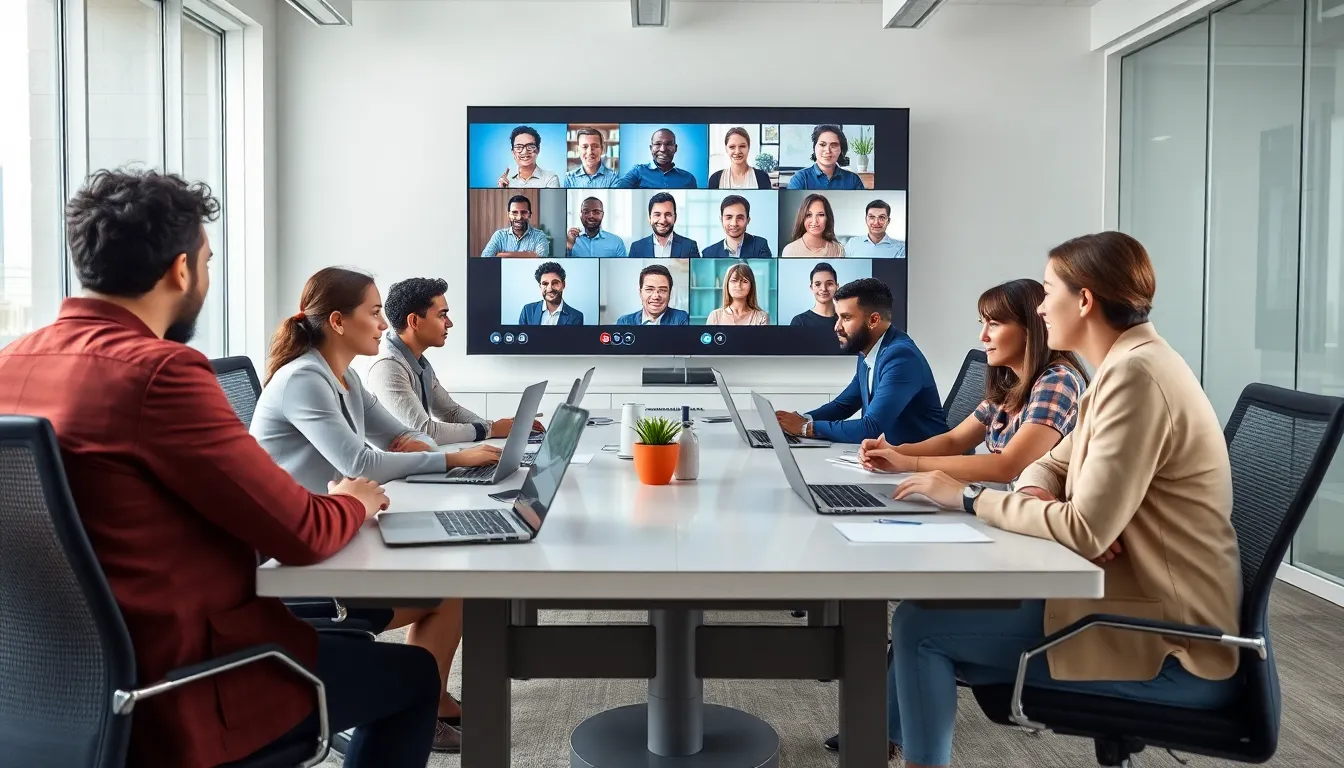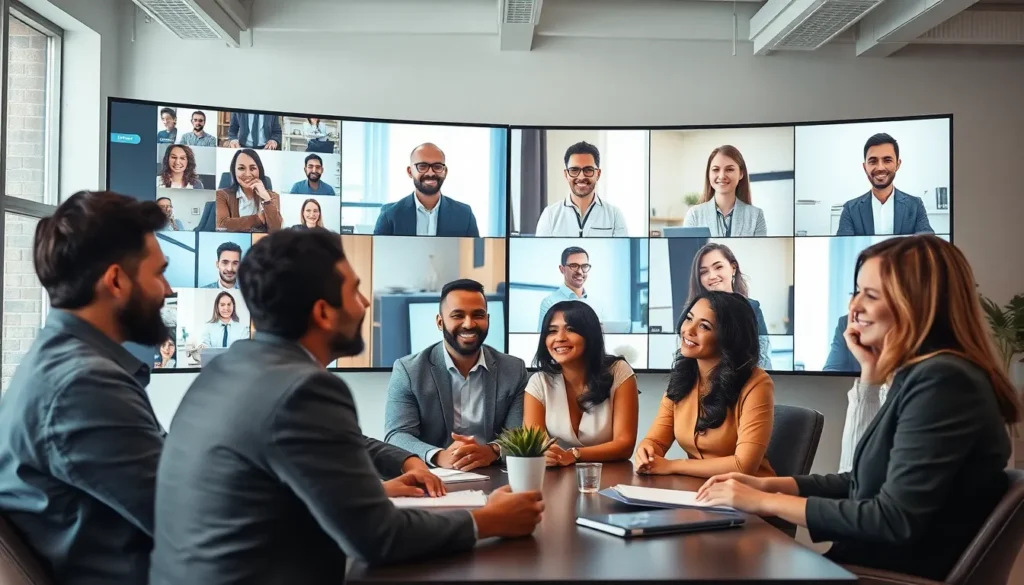In a world where software meetings can feel like a never-ending loop of awkward silences and technical glitches, the future holds the promise of a better experience. Imagine a time when software meetshaxs are as smooth as butter on warm toast. With the right strategies, organizations can transform these gatherings from tedious to terrific, making collaboration not just productive but enjoyable.
It’s time to ditch the stale conference calls and embrace innovative tools that spark creativity and engagement. By harnessing the power of technology and a sprinkle of humor, teams can turn the dreaded meetshax into a platform for inspiration and connection. Get ready to unlock the secrets to a brighter, more efficient meeting future where ideas flow freely and laughter is the best agenda item.
Table of Contents
ToggleThe Importance of Meeting Software
Meeting software plays a critical role in enhancing collaboration among team members. Efficient tools streamline communication, making it easier to share ideas and ensure everyone stays aligned. Advanced features, like screen sharing and real-time collaboration, help users interact seamlessly during discussions.
Organizations benefit from more engaging meetings when technology is effectively integrated. Reliable software minimizes technical glitches that often disrupt important conversations. By replacing traditional conference calls, companies embrace innovative platforms that encourage participation and creativity.
Meeting software also supports remote work, enabling teams to connect from different locations. This capability increases flexibility, allowing employees to contribute regardless of their physical presence. Enhanced interaction tools, such as breakout rooms and polling features, foster a sense of community among participants.
Incorporating humor and engaging formats can transform routine meetings into enjoyable experiences. Studies indicate that teams using interactive software report higher satisfaction rates compared to those relying on traditional methods. By prioritizing user experience and building trust among colleagues, organizations create an inviting environment for collaboration.
Teams that use effective meeting software develop stronger relationships, driving productivity and success. Emphasizing the right tools not only enhances communication but also helps organizations thrive in an increasingly digital workspace. Future software improvements will likely focus on refining these experiences to better meet the needs of evolving work practices.
Current Challenges in Meeting Software

Meeting software faces several challenges that impact productivity and user satisfaction.
User Experience Issues
User experience remains a significant barrier. Complicated interfaces often confuse participants during meetings. Frustration arises when essential features are hidden or difficult to navigate. Additional problems occur with inconsistent performance across devices, leading to disruptions. Feedback suggests users crave intuitive designs that facilitate easy access to tools. Organizations that prioritize user-centered design can enhance satisfaction and improve overall engagement in meetings. Studies show that a seamless user experience directly correlates with increased participation in virtual discussions.
Technical Limitations
Technical limitations pose ongoing challenges for software reliability. Connectivity issues frequently disrupt the flow of discussions. Limited integration options hinder collaboration with other productivity tools, preventing effective workflow. Many software versions suffer from delayed updates, leaving users with outdated features. Additionally, inadequate support for high-definition video and audio creates hurdles for effective communication. Companies that account for these limitations can create more robust experiences. Investing in stable technology solutions plays a critical role in maintaining seamless interactions.
Strategies to Improve Software Meetshaxs in Future
Improving software meetshaxs requires a multifaceted approach that emphasizes user-centric design and technological advancements.
Incorporating User Feedback
Gathering user feedback plays a crucial role in enhancing meeting software. Teams can implement feedback mechanisms, such as surveys or focus groups, to identify pain points in current tools. Regularly analyzing this data helps developers understand user preferences and behaviors. Adjustments based on findings lead to more intuitive interfaces, ultimately boosting user adoption. Prioritizing clear communication fosters a culture where participants feel valued and heard. Incorporating suggestions, even small ones, significantly improves user experience over time.
Leveraging Emerging Technologies
Emerging technologies can revolutionize the way meetings are conducted. Virtual and augmented reality platforms create immersive environments, making collaboration more engaging and effective. Artificial intelligence can be utilized to automate routine tasks, allowing teams to focus on strategic discussions. Integrating machine learning algorithms into software can help predict technical issues and optimize performance. Combining these innovations leads to higher productivity and satisfaction during meetshaxs. Enhancements through technology boost not only participation but also strengthen team cohesion.
The Role of Collaboration Tools
Collaboration tools play a pivotal role in improving software meetings. Enhancing communication remains a primary focus for businesses relying on team interaction. Robust features like screen sharing allow participants to visualize content seamlessly, improving engagement. Advanced collaboration functionalities, such as real-time editing, enable collective input on documents, fostering a sense of teamwork.
Companies that prioritize user experience benefit from intuitive interfaces that simplify navigation. Enhanced accessibility in tools boosts participation and minimizes frustration during meetings. Remote teams thrive on these solutions, as they facilitate connection across various locations without compromising quality.
Interactive features, including breakout rooms, generate opportunities for smaller group discussions. Polling options invite feedback and encourage participation, transforming passive viewers into active contributors. Organizations that embrace humor and engagement strategies elevate the overall meeting experience, leading to higher satisfaction rates among participants.
Data shows that reliable software greatly reduces technical disruptions, allowing for smoother interactions. Feedback loops from users drive continuous improvements, ensuring tools evolve alongside user needs. Regular updates based on user insights lead to consistent experiences across devices, directly impacting productivity.
Innovations in technology pave the way for immersive environments, such as virtual and augmented reality meeting spaces. Utilizing artificial intelligence can automate repetitive tasks, facilitating smoother operations for users. Collaborative tools that integrate these advancements are expected to redefine software meetings, promoting teamwork and cohesiveness in future work practices.
The future of software meetings holds great promise for enhancing collaboration and engagement. By prioritizing user experience and embracing innovative technologies organizations can create environments that inspire creativity and connection. As companies adapt to evolving work practices the integration of advanced tools will likely lead to more enjoyable and productive interactions.
Continuous feedback from users will be essential in refining these tools ensuring they meet the needs of diverse teams. With the right focus on accessibility and intuitive design meeting software can transform from a source of frustration into a catalyst for teamwork. Ultimately the ongoing commitment to improving these experiences will drive success in a digital workspace where collaboration thrives.









